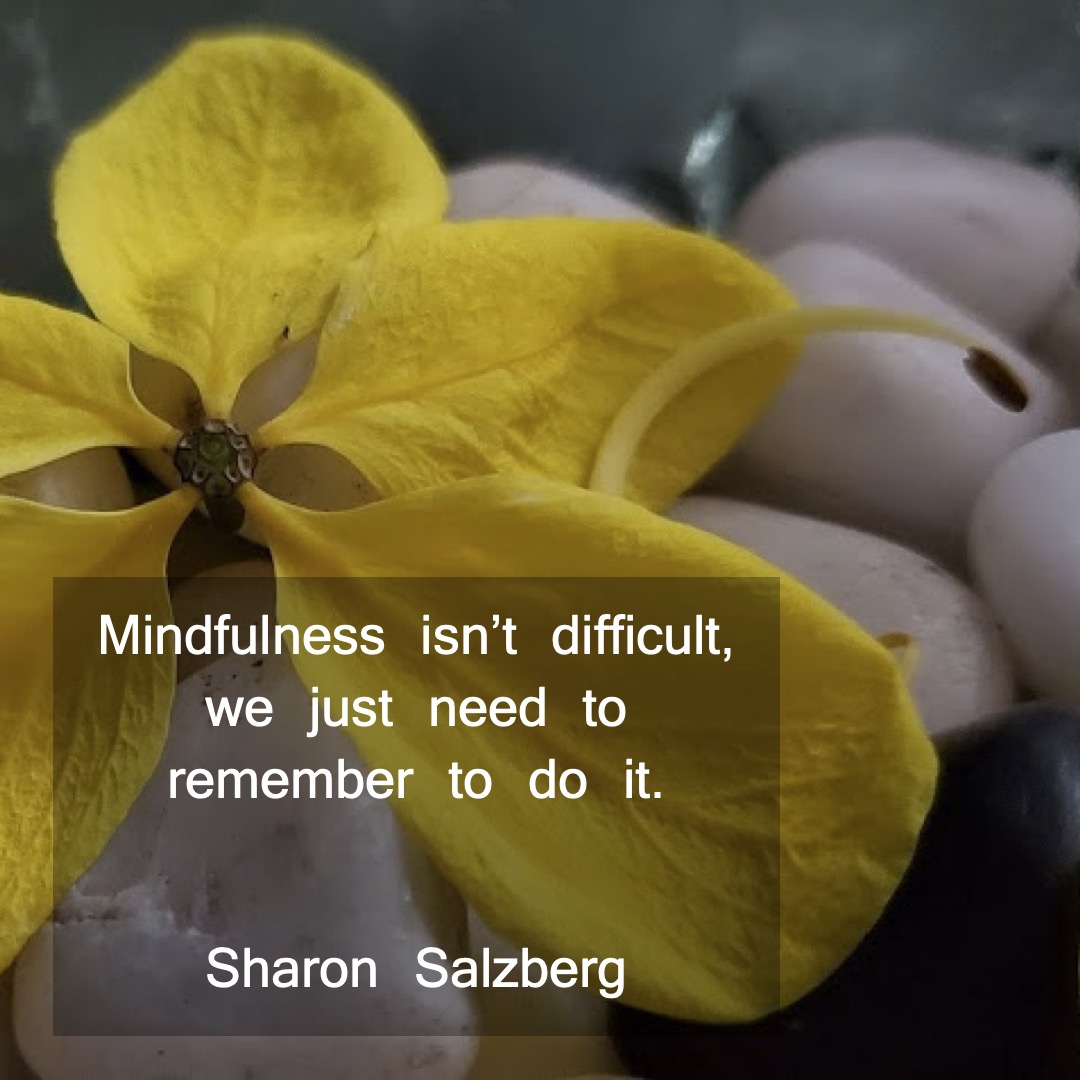Old patterns creep in. It doesn’t take much time. You can fall back into them before you know it. When was the last time you listened to your emotions and accepted your feelings? How can we be more mindful at work?
After a few weeks in my newest role, I was determined to start new patterns, continue the practice of mindfulness and stop old, counterproductive habits. With that in mind, here are my top tips on promoting mindfulness and finding your balance while working from home.
Let go and breathe.
Work can feel overwhelming, and we may forget to send ourselves messages of kindness and compassion. This year has been tough for everyone. So, how do we change our thinking and mindset? How do we make room for open conversations in order to be truly heard and free to be ourselves at all times? Psychological safety and trust go a long way. Each one of us aspires to be part of something bigger than ourselves — to belong.
Minimize constant meetings and distractions.
Constant notification alerts for meetings and the continuous flow of emails into your inbox can leave little room for productive work and creativity. Here are a few of the disciplined actions I take to focus at work despite the distractions:
- Take a five-minute breather. I was so good at back-to-back meetings that I would forget to breathe. Update your calendar to end meetings five minutes early, if you have a 30-minute meeting scheduled, and 10 minutes early for one-hour meetings. It’s amazing to realize how you can do more in less time. We’re good at using the whole 30 minutes or 60 minutes, but imagine what would happen if you set your meeting time to 25 minutes or 50 minutes instead.
- I schedule dedicated time to focus every day to avoid the “where did my day go?” scenario. I still struggle with saying no to meetings when I am double-booked, but my focus time in my calendar has been a blessing. My best creative thinking and productivity happens in the morning from 8:00 to 10:00 a.m. I try not to schedule meetings during that time block unless there isn’t a better choice; it’s the exception, not the norm.
- I also limit my number of meetings in a day. Ask yourself, is four to five hours of meetings a good balance between meetings and productive work
- Set an agenda and purpose for every meeting. I am often surprised at how few people take the time to include an agenda for meetings and then expect participants to assess the priority of discussion items themselves.
- For me, Wednesday is “no-meeting Wednesday.” Instead, it’s “learning Wednesday.” I commit to not scheduling meetings and mark my calendar as OOO.
Respect your team’s time boundaries.
Having a global team helped me think more about respecting one another’s time boundaries. When you schedule meetings, show that you genuinely care about the well-being of the invitees.
The same goes for email. Do you take the time to consider the impact of when you send emails? We have the power to choose when and how to schedule email delivery. It builds team compassion when you are disciplined to not send emails over the weekend or late into the night. Setting the right expectations and giving team members permission to be with family instead of working goes a long way toward building a people-first culture.
I cannot control the actions of others, but I can be respectful of others’ time. Sharing my work hours, 8:00 a.m. to 4:00 p.m., and creating an open transparent calendar helps my team protect their own time and find balance while working from home these days. Blocking off your calendar with an OOO message is a good way to practice self-discipline and focus by alerting your team to the times when you won’t be responsive.
Winding down from your work routine is also crucial to separating the two parts of life. I recently practiced Wise@Work’s October challenge, which was a great way to take 5 minutes to wind down for the evening and start the next work day with focus. I also tried a three-minute practice for teamwork as a meeting starter with my team and it helped us to be fully present in the meeting.
Practice resilience and self-care.
When we find ourselves questioning our values and purpose, it can be challenging, especially if we continue to self-criticize without giving ourselves a break. Short breaks of five minutes after every 90 minutes or so can help disrupt your laptop fatigue. Stroll around the room, refill your water bottle or stretch.
Be fully present in meetings and try a three-minute practice to show your commitment to being present and fostering creativity. Bring daily experiences together with practices on teamwork, focus and productivity.
Seeking approval from managers and peers can also be exhausting. Always believe you’re doing the right thing. You may not see the dots connecting, but if you do that, know that things will work out for the best.
This quote from scientist Louis Cozolino sums up the essence of mindfulness:
“We are not the survival of the fittest. We are the survival of the nurtured.”
We are all part of a global community in this world. We are here to help one another be our best selves, not what others expect us to be. Let’s take the time to create a mindful environment at work and within our communities.
Originally published at https://www.forbes.com.


